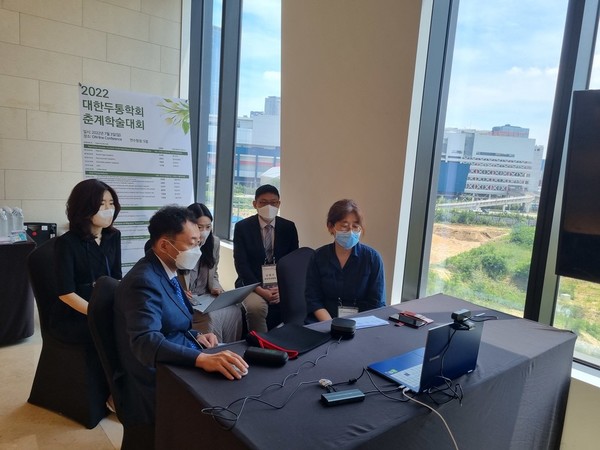Experts discussed the effectiveness of emerging new migraine drugs at an online conference hosted by the Korean Headache Society (KHS) on Sunday.
Twenty-five speakers gave lectures and presentations, and 280 members of the KHS participated in the event.

Headache experts spoke mostly on new migraine medicines that are about to be released in Korea.
Professor Cho Soo-hyun of neurology at Eulji Medical Center said Amgen’s erenumab showed continued efficacy and safety in a five-year open-label clinical trial among calcitonin gene-related peptides (CGRP) inhibitors.
He also said that Lilly’s Emgality (galcanezumab), which was introduced in Korea, reported long-term safety data in one year of continuous treatment.
“Researchers are securing long-term safety results of CGRP inhibitors,” Cho said.
Professor Lee Won-woo of neurology at Yongin Severance Hospital lectured on post-traumatic headache.
According to Lee, post-traumatic headache often accompanies not only a headache but structural changes in the brain, neuroinflammation, metabolic changes, and autonomic nervous system disorder. It can come in several different types, such as migraine-type headaches and tension-type headaches.
In many cases of post-traumatic headache, treatment often fails. Studies showed that 79 percent of post-traumatic headache patients experienced failure in one-drug treatment, and 19 percent failed in four drugs.
“CGRP inhibitors in post-traumatic headache showed that 28 percent of the patients reported a reduction in severe headache by more than half. This may not be excellent but considering that most cases are intractable, they can be new hope,” Lee said.
Professor Na Ji-hoon of pediatrics at Gangnam Severance Hospital spoke on intractable headaches in children.
According to Na, 1 percent of young children and adolescents have chronic migraines and experience difficulties forming social relations. Thus, they need active treatment, he said.
Although CGRP inhibitors are not authorized for pediatric patients, a U.S. study showed that a three-month administration of a CGRP inhibitor in children aged between 10 and 17 reported safety results similar to those of adult patients, Na explained.
“So, we’re paying attention to whether CGRP inhibitors will be approved for children.”
Kim Byoung-kun, a professor of neurology at Nowon Eulji Medical Center, said Teva-Handok’s migraine treatment Ajovy (fremanezumab), which was recently rolled out in Korea, proved effective and safe in Korean patients as well as Westerners, according to the analysis of clinical trial data.
KHS President Cho Soo-jin, who also serves as a neurology professor at Hallym University Medical Center, said if new migraine treatments are approved as the first-line therapy, benefits for patients will outweigh drug costs.
Still, she added that it remains to be seen whether they could win reimbursement.
At the conference, professor Cho Su-mi of neurology at Sinchon Severance Hospital and professor Hwang Jeong-su of neurology at Chuncheon Sacred Heart Hospital won the Best Oral Award and Excellent Poster Award respectively.
In a paper titled, “Altered gut microbiota in individuals with episodic and chronic migraine,” Cho revealed that the intestinal flora of migraine patients differed from that of the control group of healthy people. Her study suggested that treatment controlling the role of the gut-brain axis could be developed as migraine therapy.
Hwang’s study, “Role of Inflammatory Biomarkers in Patients with Acute Headache Attack to Differentiate Migraine and Non-migraine Headaches,” analyzed the leukocyte characteristics of headache patients who visited emergency rooms and suggested that there were characteristics that distinguished migraine from non-migraine.

